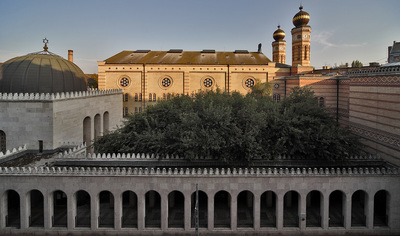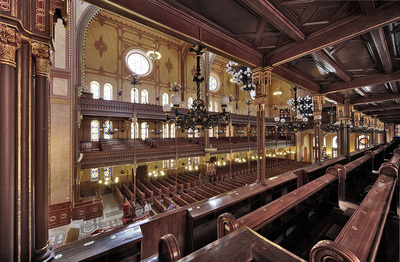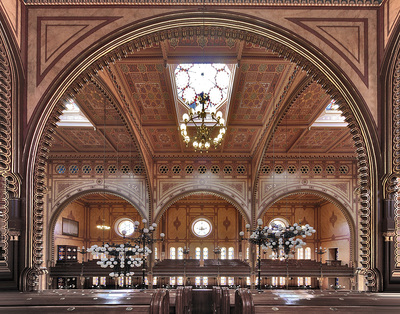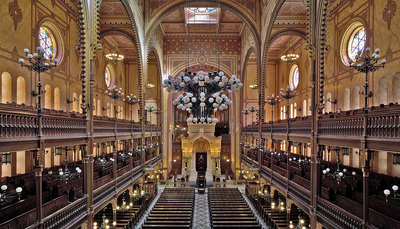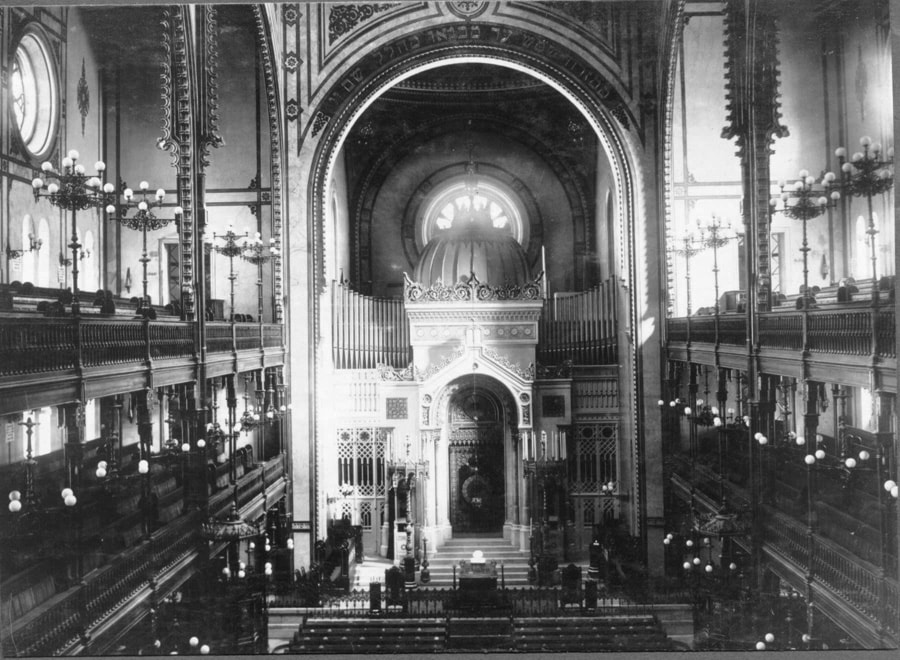Dohány street synagogue
The Dohány street Synagogue is the first purpose-built synagogue to belong the Pest Jewish community and was constructed between 1854 and 1859. It was designed by the star Viennese architect Ludwig Förster, but the Ark of the Covenant was made according to designs by Frigyes Feszl, master of Hungarian romantic architecture. At the time of its inauguratuin, it was the largest Jewish place of worship. The services were accompanied by organ music and a choir and the rabbis delivered their sermons in Hungarian. Since its inauguration, the synagogue has become a setting for social and political events in Jewish public life and the symbolic site of the Hungarian Jewish community.
The synagogue is:
The synagogue is:
- The largest synagogue built before the 20th century.
- After the prayer rooms established in existing buildings, this was the first purpose built synagogue in Pest.
- The first exceptional synagogue which, according to the concept of the time, was built in the oriental style ‘suitable to the Jews’.
- The first synagogue in Hungary built on land owned by the Jewish community.
- The first distinctive manifestation of the Jewish community in Pest, which was growing in strength.
- The first synagogue that had its own architectural concept and which attempted to define the ‘synagogue style’.
- A building with an iron structure, one of the forerunners of modern architecture.
- An important building in Budapest, designed by the architect Ludwig Förster, renowned in Vienna at the time.
- A symbolic building of the Hungarian Jewish community; it has also become a symbol of the split between Orthodox and Neolog Judaism.
- The building is a symbol of Jewish culture breaking into the mainstream.
